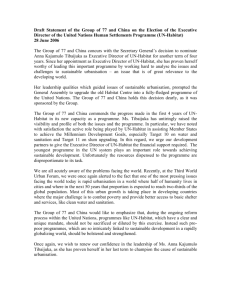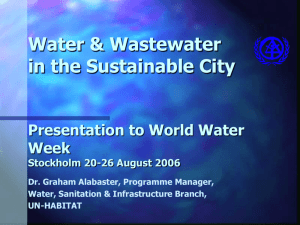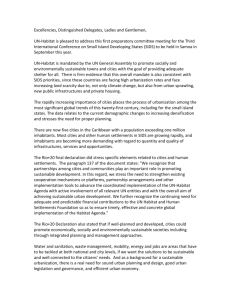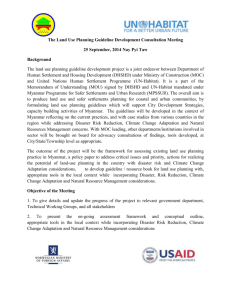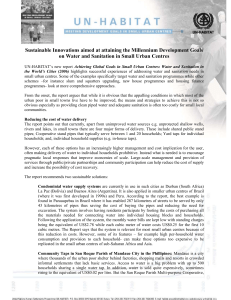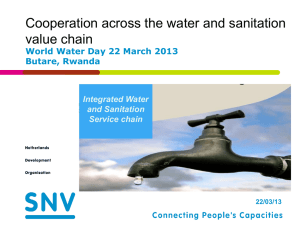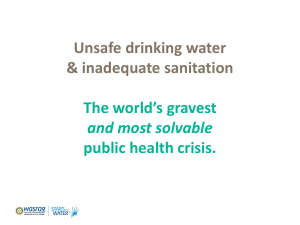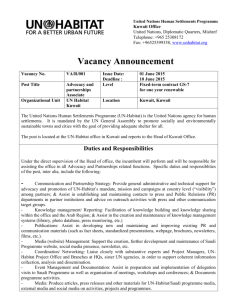The Effect of Water Supply, Waste Water & Sewage - UN
advertisement
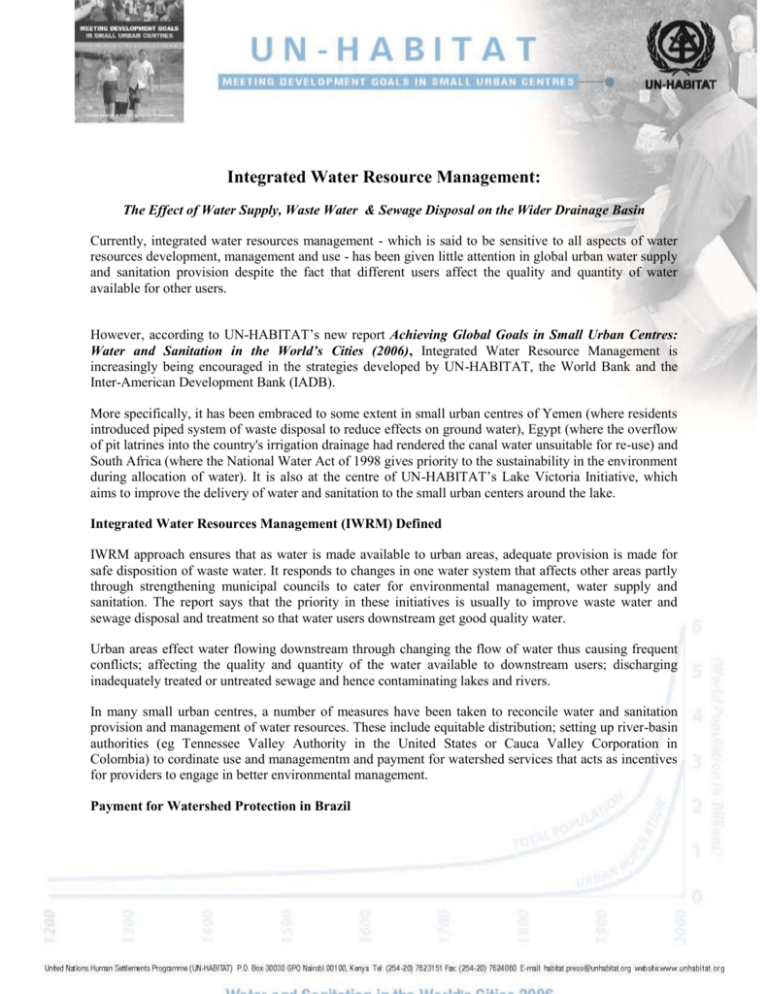
Integrated Water Resource Management: The Effect of Water Supply, Waste Water & Sewage Disposal on the Wider Drainage Basin Currently, integrated water resources management - which is said to be sensitive to all aspects of water resources development, management and use - has been given little attention in global urban water supply and sanitation provision despite the fact that different users affect the quality and quantity of water available for other users. However, according to UN-HABITAT’s new report Achieving Global Goals in Small Urban Centres: Water and Sanitation in the World’s Cities (2006), Integrated Water Resource Management is increasingly being encouraged in the strategies developed by UN-HABITAT, the World Bank and the Inter-American Development Bank (IADB). More specifically, it has been embraced to some extent in small urban centres of Yemen (where residents introduced piped system of waste disposal to reduce effects on ground water), Egypt (where the overflow of pit latrines into the country's irrigation drainage had rendered the canal water unsuitable for re-use) and South Africa (where the National Water Act of 1998 gives priority to the sustainability in the environment during allocation of water). It is also at the centre of UN-HABITAT’s Lake Victoria Initiative, which aims to improve the delivery of water and sanitation to the small urban centers around the lake. Integrated Water Resources Management (IWRM) Defined IWRM approach ensures that as water is made available to urban areas, adequate provision is made for safe disposition of waste water. It responds to changes in one water system that affects other areas partly through strengthening municipal councils to cater for environmental management, water supply and sanitation. The report says that the priority in these initiatives is usually to improve waste water and sewage disposal and treatment so that water users downstream get good quality water. Urban areas effect water flowing downstream through changing the flow of water thus causing frequent conflicts; affecting the quality and quantity of the water available to downstream users; discharging inadequately treated or untreated sewage and hence contaminating lakes and rivers. In many small urban centres, a number of measures have been taken to reconcile water and sanitation provision and management of water resources. These include equitable distribution; setting up river-basin authorities (eg Tennessee Valley Authority in the United States or Cauca Valley Corporation in Colombia) to cordinate use and managementm and payment for watershed services that acts as incentives for providers to engage in better environmental management. Payment for Watershed Protection in Brazil Capivari and Jundiai, which are in Sao Paulo State of Brazil had experienced a reduction in water quantity and quality especially because only a small proportion of the sewage flowing into the two river basins was being treated. On the other hand, intensive agriculture and industry had led to reduction in water quality while the quantity of the water had been reduced by sedimentation of the riverbed due to upstream erosion. In 1989, an inter-municipal basin committee was formed by 40 out of the 62 municipalities in the basins and by some businesses to improve watershed management. They achieved this by protecting the areas that generated the water through improving waste management, ensuring efficient consumption of water, regulating water flow, improving water quality and controlling erosion and sedimentation. In 1998, the members of the committee established a common trust fund to finance these measures. The Municipal water and sanitation utility of Piracicaba (SEMAE) contributes the equivalent of US$0.0045 for every cubic metre of the water it supplies to domestic consumers who are spread in 8 urban centres with a population of about 550,000. Industrial and irrigation users also contribute to the scheme. At present, the annual investment amounts to US$450,000 which finances long-term reforestation programme. Much of the finances are used to pay private land owners to reforest river bank areas and other water source areas to prevent erosion. As a result, SEMAE has been able to maintain supply without sourcing water from elsewhere and has, in return, been able to maintain low prices for users. In conclusion The report says that the effectiveness of such schemes may also depend on such other factors as the types of land and water managers present in a basin and the scale at which such schemes are designed to operate. The Report says that such schemes might work well in relatively small areas. But it is unlikely for commercial farmers and industrial users to change their practices because the payments offered may not be sufficient to encourage them. This is a UN-HABITAT Feature/Backgrounder, please feel free to publish or quote from this article provided UN-HABITAT Features is given credit. Suitable photographs are available on our website. For further information, please contact: Mr. Sharad Shankardass, Spokesperson, Ms. Zahra Hassan, Press & Media Liaison, Press & Media Relations Unit, Tel: (254 20) 7623153/7623151/7623136, Fax: (254 20 7624060, E-mail:habitat.press@unhabitat.org, Website: www.unhabitat.org WATSAN/2006/Pr5

